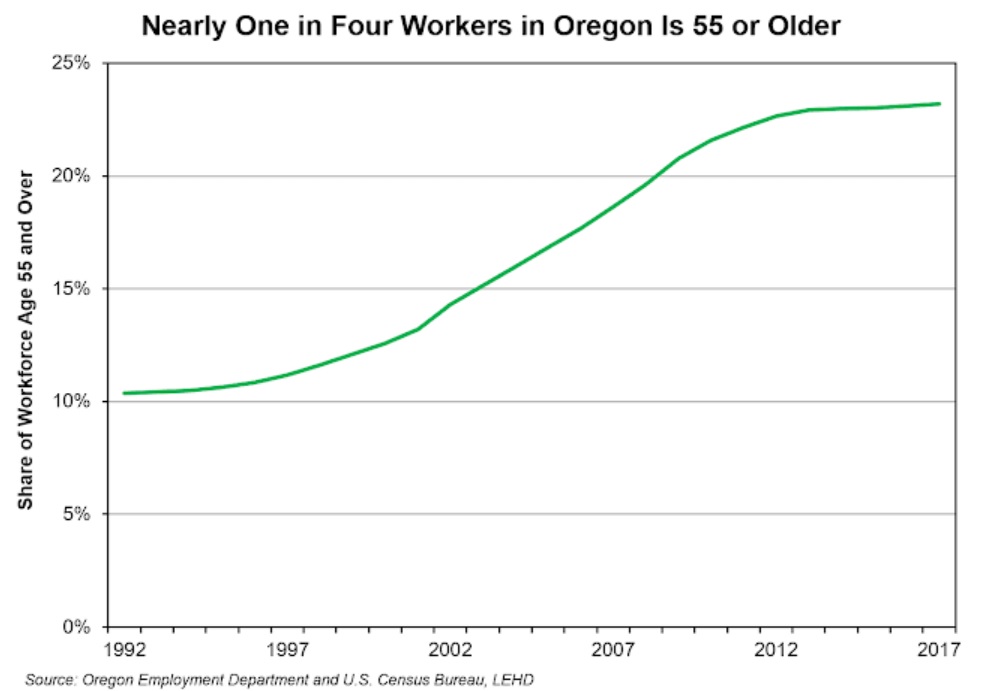By Oregon Employment Department,
Oregon’s workforce is aging. The number of Oregon jobs held by workers age 55 and over more than tripled from 1992 to 2017, while the total number of jobs grew by just 50 percent. Workers 55 years and over held just 10 percent of the jobs in 1992, increasing their share to 23 percent of all jobs by 2017. Driving this trend is the fact that much of the Baby Boom Generation is now 55 and over, and they are more likely to be in the labor force than previous generations were at this age. Many of these workers are probably planning to retire in the next 10 years, taking their skills and experience with them.
Although the aging workforce is a general demographic trend, it impacts employers, industries, or regions to varying degrees. Employers should know the age profile of their own workforce so they can plan accordingly for increased turnover from retirees. At a broader level, workforce planners need to know the demographic profiles of entire industries and regions to help gauge the need for future replacement workers.
The pace of retirements will likely be faster in industries that have an older workforce profile. Industry age profiles vary from the relatively young accommodation and food services sector where just 14 percent of workers are 55 and over to the relatively old mining and quarrying sector where 33 percent of workers are 55 and over. Although natural resources and utilities have high concentrations of older workers, they employ fewer workers and will require relatively few replacement workers. Some employers within these industries may struggle to find enough suitable workers if they don’t plan ahead.
Health care (both private and public) stands out for the size of its aging workforce, with 64,000 workers age 55 and over. Other industries with a large number of workers nearing retirement age are manufacturing (46,000 workers), retail trade (43,000), and private and public educational services (42,000).
Employers in these and in all other industries need to plan for how they are going to attract replacement workers, especially for jobs that require significant training.
To learn more about Oregon’s aging workforce, read the full article [6] written by State Employment Economist, Nick Beleiciks.
